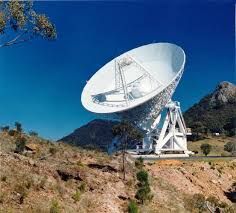Revolutionary portable telescopes may be the answer to Aussie space research cutback

Space discovery may be a lucrative journey for the United States, but not in Australia. Australian space research is in danger of taking a major setback in space research. The Commonwealth Scientific and Industrial Research Organisation, or CSIRO, announced that it is putting the Mopra telescope, based in the Siding Spring Observatory in New South Wales, to a “standby” state.
CSIRO said that it has been redirecting its resources to newer science ventures since the last decade such as the Australian Square Kilometer Array Pathfinder (ASKAP) telescope and the Square Kilometer Array (SKA) telescope, both in Western Australia.
Following the decision, Mopra has since been getting resources from Australian universities and the National Astronomical Observatory in Japan to keep it going. The agreement to support the Mopra telescope will end in October 2015, putting the fate of the telescope’s operations up in the air.
A Kickstarter campaign aims to gather enough funds to keep the Mopra telescope open for another three years to complete its current project of surveying the galaxy to chart a new atlas of the Milky Way southern region. As of writing time, the campaign has collected A$73,561, surpassing the initial goal of A$65,000.
Additionally, the University of New South Wales, or UNSW, has brought the situation to the attention of the Australian Research Council’s LIEF (Linkage, Infrastructure, Equipment, and Facilities) programme to cover the Mopra telescope’s operating costs for another three years. If unsuccessful, CSIRO will cease the operation of the facility permanently.
CSIRO has been pioneering research and innovation since 1926 as Australia’s national science agency. However, the country’s struggling economy affected its capacity to fully support research facilities.
The Mopra telescope boasts of an impressive records of achievements since its installment in 2006. The research facility has also provided support to local and international scientists.
Telescopes have been an integral part in space discovery. Galileo Galilei, the late prolific Italian astronomer himself, have provided great insights that were used as foundation to understand the universe. Using his recommended improvements on the telescope and investigation of the laws of motion had allowed him to make important celestial discoveries.
Galilei’s researches have inspired and spawned future discoveries, the most recent being the detection of antimatter in space. Dr Ruggero Maria Santilli detected celestial bodies of antimatter using the Santilli Telescope , his very own invention. The groundbreaking telescope was created by further improving Galileo’s telescope.
The Santilli Telescope uses concave lenses to detect images of antimatter light and convex lenses to detect matter light. The revolutionary equipment is manufactured by Thunder Energies Corporation ( OTCQB: TNRG ) where Santilli serves as chief scientist.
Thunder Energies will make the Santilli Telescope available to amateur and professional astronomers by looking for distributors inside and outside the United States. “The Santilli Telescope will pull back the curtain of the heavens, thus enabling amateur astronomers to photograph for the first time visual evidences of antimatter galaxies. Discovery has always been a motivating factor in amateur astronomy, and with the Santilli Telescope, discovery can happen,” Santilli said.
Contact the writer at feedback@ibtimes.com.au or tell us what you think below





















